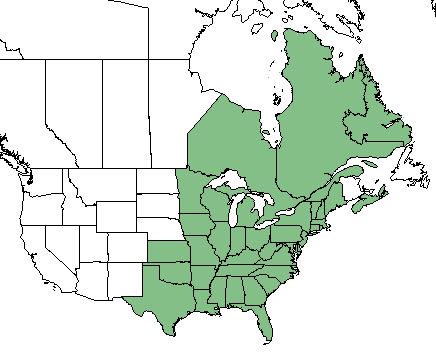Difference between revisions of "Sisyrinchium angustifolium"
(→Phenology) |
(→Description) |
||
| Line 24: | Line 24: | ||
==Description== | ==Description== | ||
| − | ''S. angustifolium'' is a perennial forb/herb of the Iridaceae family that is native to North America. <ref name= "USDA"> [https://plants.usda.gov/core/profile?symbol=CEAM USDA Plant Database]</ref> | + | ''S. angustifolium'' is a perennial forb/herb of the Iridaceae family that is native to North America.<ref name= "USDA"> [https://plants.usda.gov/core/profile?symbol=CEAM USDA Plant Database]</ref> |
<!-- Basic life history facts such as annual/perrenial, monoecious/dioecious, root morphology, seed type, etc. --> | <!-- Basic life history facts such as annual/perrenial, monoecious/dioecious, root morphology, seed type, etc. --> | ||
Revision as of 17:05, 13 May 2021
Common Names: narrowleaf blue-eyed grass [1]
| Sisyrinchium angustifolium | |
|---|---|

| |
| Photo by John Hilty hosted at IllinoisWildflowers.info | |
| Scientific classification | |
| Kingdom: | Plantae |
| Division: | Magnoliophyta - Flowering plants |
| Class: | Liliopsida - Moncots |
| Order: | Liliales |
| Family: | Iridaceae |
| Genus: | Sisyrinchium |
| Species: | S. angustifolium |
| Binomial name | |
| Sisyrinchium angustifolium Mill. | |

| |
| Natural range of Sisyrinchium angustifolium from USDA NRCS Plants Database. | |
Contents
[hide]Taxonomic Notes
Synonym: S. graminoides (E.P. Bicknell)
Variety: none
Description
S. angustifolium is a perennial forb/herb of the Iridaceae family that is native to North America.[1]
Distribution
S. angustifolium is found throughout the eastern North American Continent, as far west as Texas, Kansas, and Ontario, Canada. [1]
Ecology
Habitat
Typical habitats for this grass include woodlands, forests, meadows, and sandhill swales. [2] Specimens have been collected from pine savanna after a burn, drying sandy loam, dry upland pine-oak hickory woods near a river, and moist loamy sand near small pond. [3]
Soils with a medium to fine texture is more hospitable to S. angustifolium. [1]
The grass has a intermediate tolerance for shade and a low tolerance for shade. [1]
Phenology
S. angustifolium has been observed to flower from January to May with peak inflorescence in April. [4]
Fire ecology
The grass has a high tolerance for fire. [1]
Conservation and Management
Cultivation and restoration
Photo Gallery
References and notes
- ↑ Jump up to: 1.0 1.1 1.2 1.3 1.4 1.5 USDA Plant Database
- Jump up ↑ Weakley, A. S. (2015). Flora of the Southern and Mid-Atlantic States. Chapel Hill, NC, University of North Carolina Herbarium.
- Jump up ↑ URL: http://herbarium.bio.fsu.edu. Last accessed: June 2018. Collectors: Loran C. Anderson, R.A. Norris, R.K. Godfrey, R. Lomarek, Rodie White, Richard S. Mitchell, J. Kevin England, Marli Rikard. States and counties: Florida (Franklin, Wakulla, Jackson, Gilchrist, Levy, Alachua, Jefferson, Liberty, Leon, Gadsden, Holmes, Hamilton) Alabama (Winston) Georgia (Grady, Thomas)
- Jump up ↑ Nelson, G. PanFlora: Plant data for the eastern United States with emphasis on the Southeastern Coastal Plains, Florida, and the Florida Panhandle. www.gilnelson.com/PanFlora/ Accessed: 29 MAY 2018